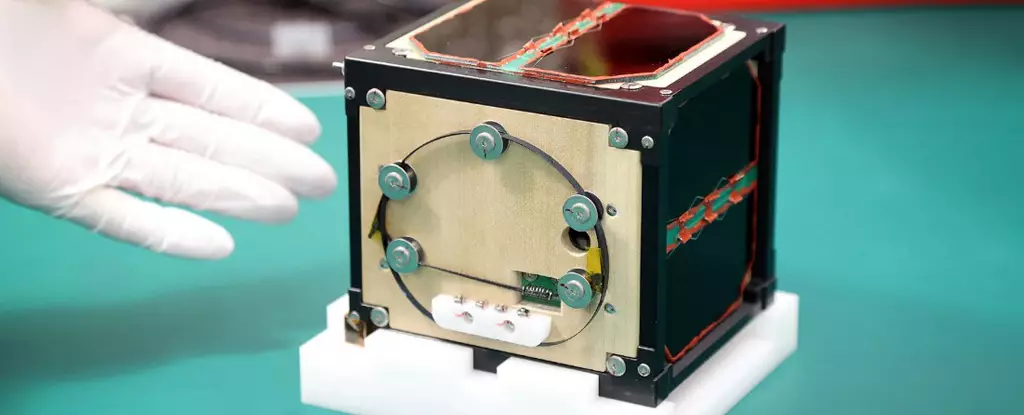In an impressive leap towards sustainable space exploration, the first-ever wooden satellite, dubbed LignoSat, has successfully launched aboard a SpaceX rocket. Developed by a team of scientists at Kyoto University, this initiative not only showcases the potential of alternative materials in aerospace engineering but also addresses significant environmental concerns linked to traditional satellite technology. The project’s goals extend beyond mere experimentation; it aims to demonstrate that wooden components can effectively serve the demanding requirements of space missions.
As satellite technology continues to evolve, the environmental repercussions of retiring space hardware have come into focus. Conventional satellites often re-enter the Earth’s atmosphere, disintegrating to release metal fragments that can contribute to space debris and adversely affect our environment, as well as telecommunications networks. This growing problem highlights the need for innovative alternatives. LignoSat’s wooden construction presents a promising solution by offering the potential to burn up completely upon re-entry, thereby significantly reducing the risk of metal pollution associated with decommissioned satellites.
The wooden satellite was launched from NASA’s Kennedy Space Center in Florida, within a secure container developed with the collaboration of the Japan Aerospace Exploration Agency. The operation was deemed a success, with affirmations from both Kyoto University’s Human Spaceology Center and Sumitomo Forestry, the co-developer. In a recent communication on the social media platform X, officials confirmed that LignoSat had “flown into space safely,” setting the stage for subsequent stages of the mission. This launch represents not merely a technological feat but also a symbolic milestone in our shift towards more environmentally sensitive space exploration strategies.
Testing Durability in Space Conditions
Projected to dock at the International Space Station (ISS) shortly, LignoSat’s mission will span approximately a month before being deployed into outer space for further testing. The primary objective of this mission is to gather extensive data on the performance and resilience of wooden materials under the stark conditions of space. Researchers are particularly interested in monitoring the satellite for signs of strain, as well as evaluating its ability to endure drastic temperature fluctuations. The findings from this endeavor are expected to provide essential insights that could reshape our understanding of satellite materials.
Astronaut and special professor at Kyoto University, Takao Doi, has expressed significant optimism regarding the future of non-metal satellites. His views resonate with a growing recognition within the aerospace community that alternative materials may play an invaluable role in reducing the carbon footprint of space activities. The successful mission of LignoSat could pave the way for the integration of sustainable materials into mainstream satellite design, enhancing environmental responsibility in space technology and contributing to a healthier planet.
LignoSat stands as a beacon of innovation in satellite technology, illustrating how creative engineering can address pressing environmental concerns, while advancing humanity’s exploration of space. As the world watches this groundbreaking experiment unfold, it may well mark a transformative moment in the field of aerospace engineering.

